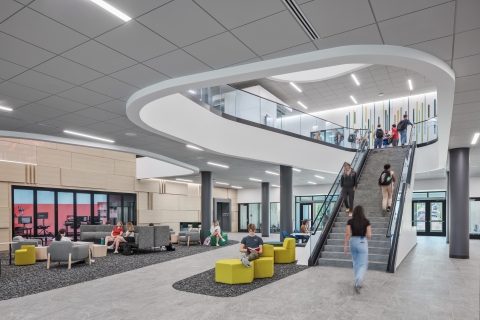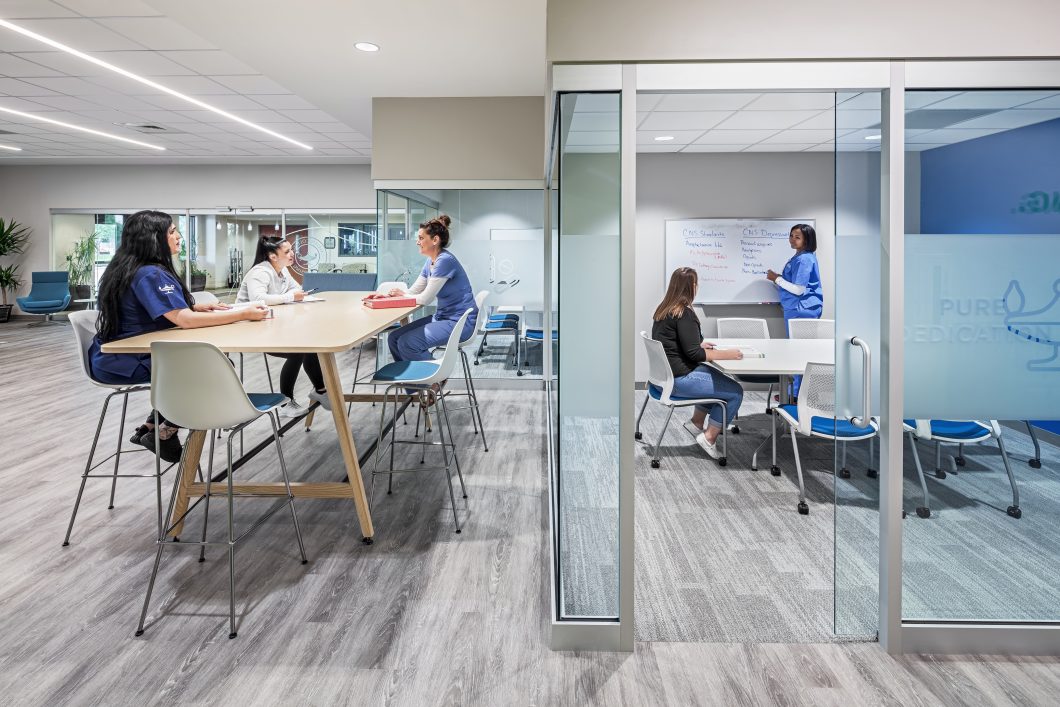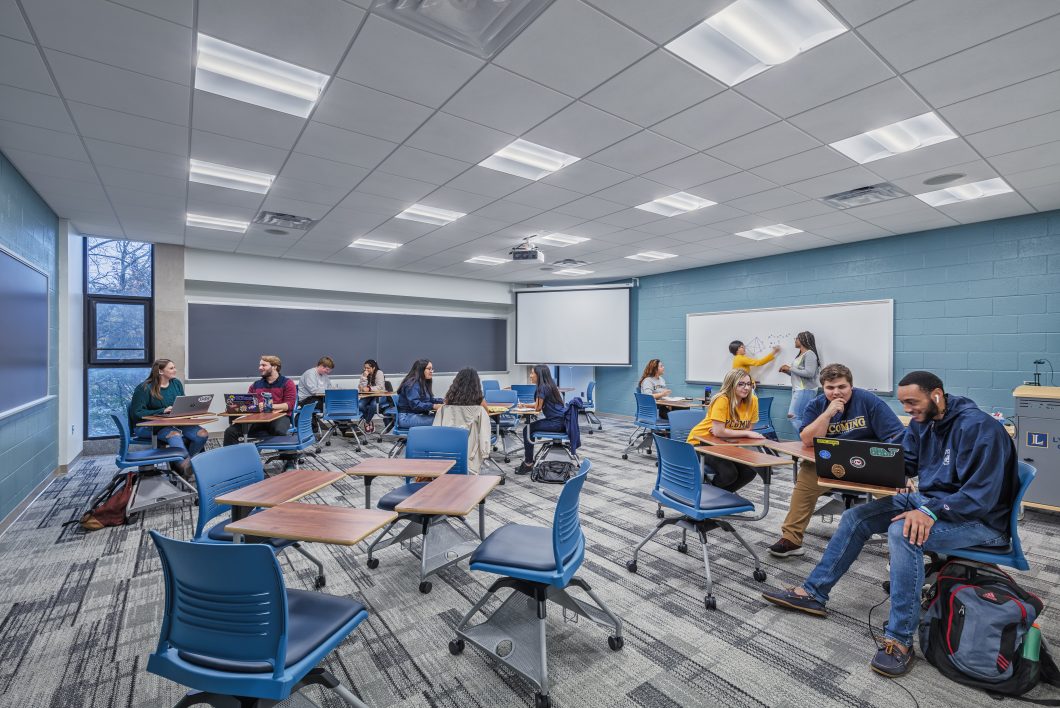
Understanding the Student Experience: Part Three
Staying true to its promise to Design for People, BHDP Architecture frequently engages with students on campuses across the country to gain a deeper understanding of their experiences, which span a range of academic, social, and recreational pursuits. This spring, fueled by higher education institutions’ responses to the COVID-19 pandemic, BHDP Client Leaders initiated a series of virtual focus group discussions with a cross-section of students to understand how these mandated online learning policies and campus closures have impacted the students’ current experiences. In addition, these conversations are also uncovering how this pandemic will likely shape their behaviors and expectations for the future of higher education when they are permitted to return to campus.
This blog is the third of a four-part series of observations and key learnings that have been distilled from these virtual focus groups. A more comprehensive summary was shared in BHDP’s Trends + Tensions podcast series this May, and an article that features the various implications that were generated from this qualitative research will be published in early summer.

Galen College of Nursing expanded their Tampa Bay campus with a satellite campus at Northside Hospital to provide students opportunities to engage with healthcare providers, participate in educational and training events, and witness care first hand. Galen College of Nursing
The more we talk to students, the more we uncover. We have spoken to architecture students, nursing students, engineering students, and more who have allowed my colleagues and me to capture a glimpse into the minds of college students who are adapting to remote learning amidst the COVID-19 pandemic. Each virtual focus group helps BHDP to further develop our predictions for future trends in higher education. Our session with students Meghan, Joshua, and Alexa was no different. Here are some key lessons from this latest conversation:
Students who learn together form a close bond that promotes enhanced learning, and many students are missing that sense of community.
Throughout our three different virtual focus groups, one constant remains: students miss their friends. Even more so, students revealed they learn from each other and produce better work when they are surrounded by their peers. Joshua, a sophomore at Virginia Tech, said “I miss my friends the most. I miss seeing people around campus. I miss the community of our studio. Whether you are there at 1 a.m. or 1 p.m., there’s always somebody there.”

Lycoming College’s Academic Center consists of administrative, classroom, and lecture hall space on multiple floors and is one of the most popular buildings for collaborative learning.
Meghan, a graduate student at the Galen College of Nursing, talks about the connections you form in nursing school. “In nursing, we ‘travel in packs,’ so now, you don’t get that bond. We miss the experience of knowing the people we work with.” These conversations stressed the importance of community; students take comfort knowing their peers are sharing the same experiences.
Alexa, a sophomore at Virginia Tech, talked about how the shift online has changed her learning experience. “Not being able to sketch things with friends has been difficult.” Joshua agrees, “Without getting feedback on our work, it makes it difficult to improve.” The hands-on learning in labs and studio environments is proving to be crucial to student experiences, yet online learning is creating a barrier to doing so effectively.
“I miss our open labs. It may sound silly, but I miss the models, the hands-on experience, and taking something apart and putting it back together. In nursing, the computer screen does nothing compared to an on-campus experience,” Meghan said. Not only do peers rely on each other to learn, but they rely on models, labs, and simulations to grasp complicated information. Sadly, those cannot be completed in the same way online.
Students are having a hard time collaborating virtually.
In this group, students unanimously agreed: collaboration is suffering as a result of the shift online. “I’m in a group project now, and it’s hard to hold my iPhone in one hand and sketch with the other. It is difficult because my group cannot understand my ideas that way. It’s just not working,” Alexa said.
Joshua is also working on a group project and agrees it has become cumbersome: “I really like talking out ideas. In my group, it is difficult as we are working now through text messaging. I am really outgoing, and I miss hearing input.” Throughout our three different focus groups, students have expressed there is no replacement for hands-on learning alongside peers and faculty. Students who need collaboration to learn and digest information are suffering right now. In an interview done by EdSurge, students said, “I know a lot of my friends who were in film, performing arts, and musical theater classes, and they’re losing something big from their learning experience. They can’t collaborate in the same way that they used to.” Collaborating online is possible, but it may not be as effective.
Students are predicting long-lasting changes that will impact the future of higher education and the campus environment.
Joshua and Alexa, both interior design majors, made interesting predictions about future learning environments. Joshua predicts “there will be much more attention to detail, including surfaces and finishes.” Alexa seconded that notion: “When we think about materials and a cleaner environment, everyone will likely have more mindfulness about what they’re touching.” Designers will need to be conscious of this moving forward; even the smallest details cannot be overlooked.
As we were wrapping up the conversation, Joshua said something that stuck out to me. “We still won’t know what the impact will be, but how we design for people and how they interact will change.” He is exactly right; it is important to understand what is happening now, so we can prepare for future trends in higher education.
The bottom line? We design for people. We bring a deep knowledge of how spaces are evolving and how that will impact design. We are looking forward, and these virtual focus groups are making that possible.
Check out the fourth part of this series with more student experiences and insights on the effects COVID-19 is having on the future of higher education. In case you missed it, read part one and part two of this series.
